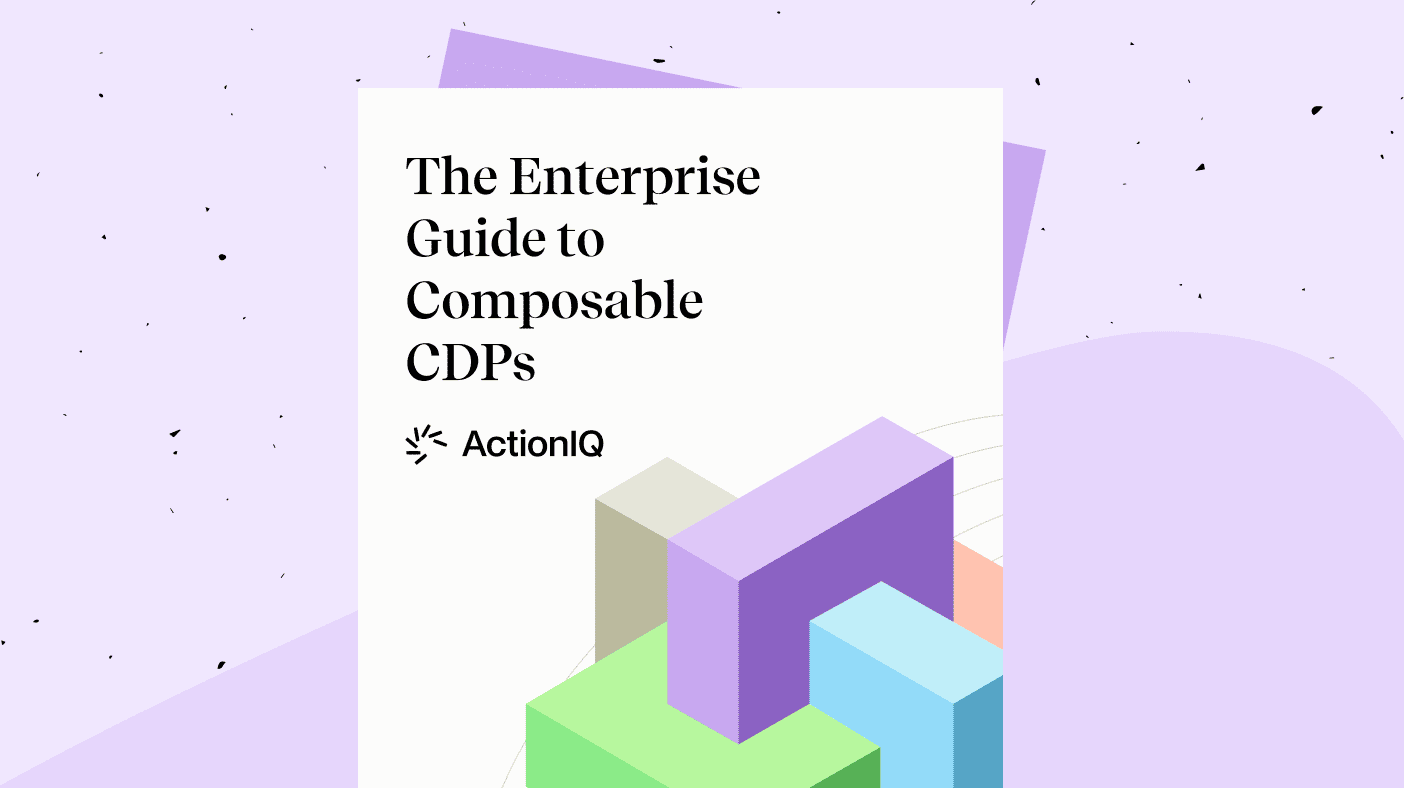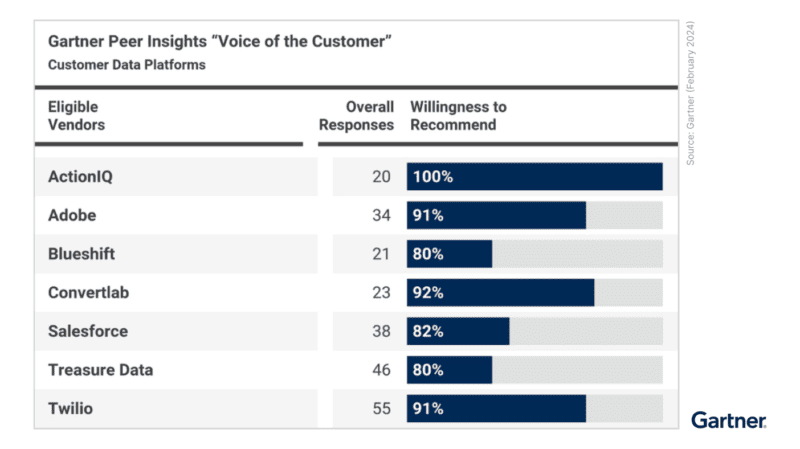Questions and Answers About Adopting Composable Architecture

If you’ve been on our Blog or surfing our Library section lately, you may think you already have everything you need to know about composable architecture — think again.
It’s easy to talk about the benefits of composable architecture, but when you have a webinar and get questions after the conversation that dig deep into laying the right groundwork, aligning on adoption, and more it gives you time to reflect on some of the tough questions about cultural change and adoption.
We recently had a conversation with Gerry Murray, Research Director at IDC about evolving trends in marketing technology and the customer experience, with insights into how enterprise businesses are rethinking their tech stack to remain resilient.
Below, we’ll share the top questions we got after the webinar, along with the philosophy and approach to designing composable architecture that satisfies the needs of all users (with the scale to always go further).
You can also catch up on the full conversation here to get the numbers on trends in marketing technology from IDC, along with the key benefits of composable architecture.
4 Questions About Adopting and Maintaining Composable Architecture
1. As a marketing professional interested in this concept, how do I approach my IT team about it?
Composable architecture is a concept that’s exciting for data-driven marketers and business team members as well as IT professionals. For marketers, the idea of tapping directly into a full and complete set of data means better audiences, and better results. But communicating this to technical teams in the enterprise may require a light touch.
Gerry explains that it’s never a one way street.
“It’s not just an IT or a marketing thing. The grander goal is this idea of creating customer data as an enterprise service, and each of the functions and the various systems and stacks that are running. Each of these front office departments is consuming and producing customer data — and it’s being made available based on brand and regulatory policy to other use case decisioning environments. So I think one of the key things is that marketing shouldn’t go into the conversation with architectural ideas on how to do it. What marketing is really about is why are we building it? Why do we need more data? And I think that’s a discussion that marketers and IT and data governance teams, and also other decision-makers around the front office need to have as a conversation,” he explained.
Having a better sense of how specific attributes and customer interactions within the business can be leveraged across use cases should help teams understand not only the concepts of new use cases and priorities, but it should also start to give the marketing team and the customer experience (CX) team in general, a better basis for building economics value propositions for investment in the data layer.
When marketing teams concentrate on the idea of data activation and how effectively the organization is leveraging the enterprise customer data set, you can scale that down to a single department, to consider how all the various roles in marketing leverage that data.
2. Is it necessary to identify use-cases before building a customer data platform (CDP), or can the identification happen in parallel?
Gerry explains that it is necessary to have at least some use cases set up with targets at the very beginning.
“By way of analogy, if you think about building the data warehouse, this massive, multi-petabyte environment with just a bazillion data attributes in it — it’s kind of like, okay, that’s a huge asset for the business, great job building that. But when you then invite the users in, it’s kind of like walking into Home Depot in the dark. Like, there’s a bazillion things in here, I don’t know what I’m looking for, how to look for it, or where I’m going to find it. And that is going to kill your value realization potential. So you need to have target use cases.
“You also need to have an intelligence layer, an analytics and AI layer on top of the data set to turn the lights on in the warehouse. Now, you can see where everything is. I don’t necessarily know what everything in the store does — but I can use AI to start enabling me to at least pull the dataset,” he added.
Marketers will soon discover the attributes that will drive their decision-making from around 70% accuracy to 84% accuracy. And with composable architecture, business teams get no-code access to the attributes and audiences they need to activate with more accuracy.
3. How do I deal with bots?
In a recent enterprise resiliency study by IDC, they found that one of the major challenges for enterprise businesses is bot proliferation. The best way to prevent that is to make sure you aren’t putting the cart before the horse to remain resilient.
If you let your technology investments get ahead of your operational and governance practices, you’ll expose your business. Gerry explains that planning should be based around the concept of a strategy or multi-year strategy for rapid and expansive use case proliferation.
You want to make sure that you have a good set of use cases established so that after you’re done solving the first tranche of departmental use cases, you can start to evangelize the value of some of that data into other decision making contexts in other departments of the enterprise and vice-versa. It’s a huge strategic initiative for companies at scale. But there’s a lot of planning and collective, multidisciplinary collaboration that’s necessary to get it right.
Gerry Murray, IDC
4. How do I prepare my enterprise business for changes in the environment?
Change is really the only constant for organizations right now. Designing an infrastructure that can bend, move and adapt to changes in environment, new use-case opportunities, channel proliferation, changing customer demands and more should be at the core of how you design your infrastructure. Composable architecture enables that in a few different ways.
The exciting part about composability is that it’s the best of both worlds. You’re getting technology that’s easier to implement and lighter weight, for a data infrastructure team to sort of compose as they build out solutions. And then for the marketers, they’re getting the same interface that they’re used to on the side of the business, they have that package CDP interface, they sort of don’t know the difference. The biggest thing is, they get the added value of more data, because now they get to tap into the central source of data.
Gerry Murray, Research Director at IDC
With bundled architecture, you’re really putting all of your eggs in one basket and locking yourself into (what can easily become) a very inflexible environment. Vendors might promise to do it all, but often organizations find that they’re at the mercy of that vendor’s roadmap in order to grow.
Composable architecture unlocks flexibility for brands by offering an alternative solution. Rather than purchasing bundled applications, organizations can choose the way they want the solution to work within their tech stack, and can choose to adopt additional features along the way.
The three key elements of composable CDPs are no-code, zero-copy architecture and warehouse-agnostic (download our Composable CDP Guide). This lets organizations compute directly in their existing data infrastructure without the use of SQL, without being tied to any single data warehouse or storage system. It grows with you, instead of locking you in.
Data as a Brand Driver and Culture of Trust
How you treat your data is a direct reflection of how you treat your customers. If you’re enabling a culture of trust and transparency in your data practice, that will be reflected back to your customers.
To wrap everything up, Gerry explains that data empowers teams across organizations to make better and better decisions. But how you treat your customer data is how you treat your customers. There should be a great deal of diligence, respect and protection applied to all that data that you are collecting from your customers. It’s incredibly valuable to you as a business — and as a marketer, it’s also incredibly valuable to your customer. So treat it with care.
In the end, your ability to deliver frictionless customer experiences and differentiate your brand through that sense of continuity is a big differentiator, and that data ecosystem is what is enabling that — it’s almost becoming your brand, and certainly with respect to digital interactions with customers.
Learn More About The Benefits of Composable Architecture
Get a custom demo from our experts to explore how composable architecture can transform and elevate how your IT, marketing and business teams work together at your organization.





